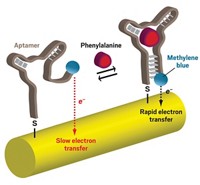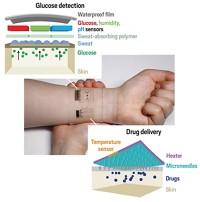Advertisement
Grab your lab coat. Let's get started
Welcome!
Welcome!
Create an account below to get 6 C&EN articles per month, receive newsletters and more - all free.
It seems this is your first time logging in online. Please enter the following information to continue.
As an ACS member you automatically get access to this site. All we need is few more details to create your reading experience.
Not you? Sign in with a different account.
Not you? Sign in with a different account.
ERROR 1
ERROR 1
ERROR 2
ERROR 2
ERROR 2
ERROR 2
ERROR 2
Password and Confirm password must match.
If you have an ACS member number, please enter it here so we can link this account to your membership. (optional)
ERROR 2
ACS values your privacy. By submitting your information, you are gaining access to C&EN and subscribing to our weekly newsletter. We use the information you provide to make your reading experience better, and we will never sell your data to third party members.
Analytical Chemistry
Electrode Measures Brain Alcohol Levels In Tipsy Rats
Biosensors: Implantable wireless electrode could help track ethanol’s changes to rat brain chemistry
by Melissae Fellet
August 1, 2012

To help researchers understand how drinking alcohol alters brain chemistry, a group of scientists have developed a wireless, implantable biosensor that measures ethanol in the brains of rats (Anal. Chem., DOI: 10.1021/ac301253h). The sensor might help scientists develop drugs to treat alcohol addiction, the researchers say.
The first step in studying alcohol’s effects on neurochemistry is to determine how much reaches the brain after drinking, says Pier Andrea Serra, of the University of Sassari, in Italy. Unfortunately, limitations plague current techniques to measure ethanol levels in the brains of rats, neuroscientists’ animal of choice for alcohol studies. Microdialysis doesn’t allow real-time analysis of ethanol levels. It also limits the rats’ movement because probes in their brains must be wired to equipment. Meanwhile, magnetic resonance imaging suffers from low spatial resolution.
Serra and his colleagues wanted to measure ethanol at precise locations in an animal brain, in real time, and in a way that allows the animal to move around. So they developed a wireless sensor using a platinum wire coated with a polymer and an enzyme. The enzyme oxidizes ethanol and, as a result, produces hydrogen peroxide. The peroxide molecules then react with the platinum wire to produce an electrical current in proportion to the amount of ethanol present.
The team implanted the sensor in the brains of three rats, injected ethanol into the animals’ stomachs, and watched the current rise over about 30 minutes as the ethanol reached the animals’ brains.
The biosensor can measure ethanol concentrations from about 300 μM to 40 mM, a range that probably covers the rat equivalent of slowly sipping a drink to it gulping a shot of liquor, Serra says. But the sensor’s sensitivity drops after two weeks due to increasing interference from other chemicals in the brain, he adds. The team is optimizing the sensor construction so it remains sensitive for longer.
The scientists hope to understand how various concentrations of alcohol affect the release of dopamine, a neurotransmitter, in the early stages of addiction, Serra says. The sensor could also help study how drugs affect the concentration of ethanol in the brain, he adds.





Join the conversation
Contact the reporter
Submit a Letter to the Editor for publication
Engage with us on Twitter